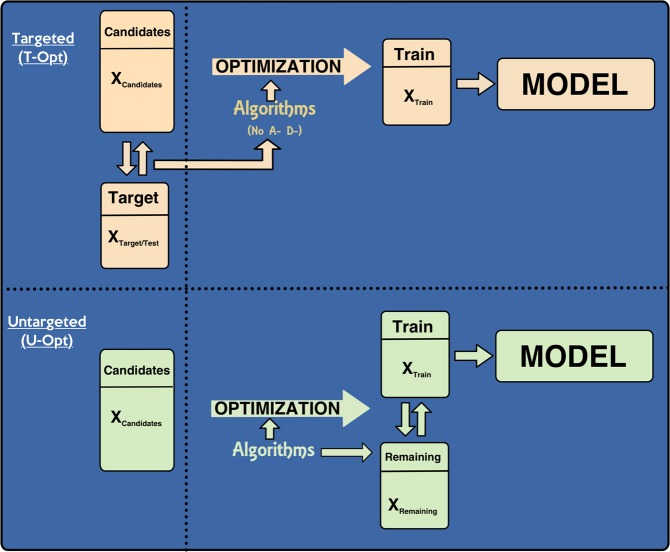Figure 1.
The two optimization schemes used in the article. The two scenarios in this figure are referred to as U-Opt and T-Opt: U-Opt describes the case where the data consists of the matrix of genomic scores for a candidate set, XCandidate; in T-Opt, we also know the genomic scores for a test set, XTS. Based on a design criterion, a training set of a given size is selected from the candidate set, the genomic score matrix for these individuals is denoted by XTRS. The genotypes in candidate set but not selected in the training set constitute the remaining set, with the score matrix XRemaining. We observe the phenotypes after the training set is identified and using these trait values in the training set and XTRS a genomic prediction model will be built. The algorithms A- and D- Opt cannot use the genomic scores of the test set in T-Opt.

